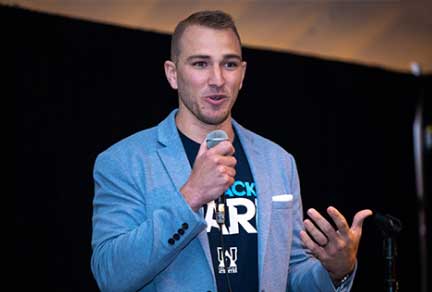Perspective on the Food and Drug Administration (FDA) Enforcement Policy for Ventilators and Accessories and Other Respiratory Devices During the COVID-19 Public Health Emergency
Background
There is an insufficient supply of ventilators to treat patients around the globe desperately in need of ventilatory support due to the Coronavirus pandemic. In response to the unprecedented demand for Ventilators, the FDA issued guidance for industry on its “Enforcement Policy for Ventilators and Accessories and Other Respiratory Devices During the Coronavirus Disease 2019 (COVID-19) Public Health Emergency” (hereafter the Guidance). This policy is “intended to remain in effect only for the duration of the public health emergency related to COVID-19 declared by the Department of Health and Human Services (HHS), including any renewals made by the Secretary in accordance with section 319(a)(2) of the PHS Act.” https://www.fda.gov/media/136318/download.
Ventilators are primarily Class II medical devices per FDA’s classification, and fall within the Anesthesiology Devices family and are cleared by the FDA via a premarket 510(k) application. There are several types of ventilators, including Continuous Ventilator - intended to mechanically control or assist patient breathing by delivering a predetermined percentage of oxygen in the breathing gas. Adult, pediatric, and neonatal ventilators are included in this generic type of device, and Powered Emergency Ventilator - intended to provide emergency respiratory support by means of a face mask or a tube inserted into a patient's airway, to name a few. See, 21 CFR 868.5895 and 21 CFR 868.5925, respectively. Refer to Table 1 in the Guidance for the list of devices and their accessories that are in scope.
The Guidance establishes FDA’s alternative approach to expand the availability of ventilators during the COVID-19 pandemic. In summary, manufacturers can make limited modifications to the indications, claims, and functionality, or changes to the hardware, software, or materials of FDA-cleared ventilators. These types of modifications under normal circumstances would compel the manufacturer to submit a new premarket 510(k) application to the FDA. Also, with the great demands for ventilators, FDA will grant access to the US market via the FDA's Emergency Use Authorization (EUA) process, to manufacturers of ventilatory support devices that are not currently legally marketed in the US, and also to manufacturers not previously engaged in medical devices manufacturing, who have the capabilities to increase supply.
Healthcare facilities are encouraged by the FDA to use “FDA-cleared conventional/standard full-featured ventilators when necessary to support patients with respiratory failure, or a device subject to an Emergency Use Authorization, if any.” FDA emphasized that the agency does not object to limited modifications made to FDA-cleared ventilators in an effort to increase supply, so long as the modifications “does not create an undue risk in light of the public health emergency.”
During an FDA inspection, the burden of proof remains on the shoulders of the ventilator manufacturers to be able to demonstrate or justify that the modifications made to the ventilators did not adversely affect the finished device. The assumption here is that the modified ventilators will continue to be in use after the COVID-19 pandemic is over. Manufacturers should strike the right balance between implementation of the FDA enforcement policy and satisfying basic medical device quality system requirements that apply to these class II devices.
Here are some key points for consideration to satisfy basic quality system requirements and maintain relevant documentation to demonstrate compliance during an FDA on-site inspection or a desk top audit, specifically for:
- current medical device manufacturers, who want to modify and/or make changes to existing FDA-cleared ventilators.
- companies not previously engaged in medical devices manufacturing, who have the capabilities to increase ventilator supply.
- manufacturers of ventilatory support devices currently marketed outside the US, who seek US market access via the EAU process.
Existing Medical Device Manufacturers Who Modify and/or Make Changes
All manufacturers of medical devices are subject to the requirements of FDA Quality System Regulation, as set forth under 21 CFR 820 - Quality System Regulation (QSR). Without going into great detail here, suffice it to say that the QSR encompasses the overarching quality management systems that device manufacturers must establish (define, document, and implement), in order demonstrate FDA compliance and ensure medical devices are appropriately designed, developed, manufactured, and distributed to the marketplace.
Existing device manufacturers should already have all the relevant quality management systems established. Examples of key quality system elements to satisfy when making changes and/or modification to FDA-cleared ventilators:
- Subpart B – Quality System Requirements (management responsibility, personnel)
- Subpart C – Design Controls (design verification, design validation, including software validation, and design transfer)
- Subpart E – Purchasing Controls
- Subpart G – Production and Process Controls (process validation)
- Subpart H – Acceptance Activities (receiving, in-process, and finished device acceptance)
- Subpart J – Corrective and Preventive Action
- Subpart M – Records (device master record, device history record, complaint files)
- 21 CFR 803 – Medical Device Reporting
- 21 CFR 806 – Medical Devices, Reports of Correction and Removals
Contract Manufacturers
The assumption here is that these companies have not previously engaged in medical device manufacturing but will have the capability to produces these devices, following the device master record and in accordance with any quality agreement(s), and thus increase the supply during the period of the enforcement policy. These companies would have to register with the FDA and have a QMS. Examples of the QMS element they would need, include:
- Subpart B – Quality System Requirements (management responsibility, personnel)
- Subpart C – Design Controls (design transfer/technology transfer)
- Subpart E – Purchasing Controls
- Subpart G – Production and Process Controls (process validation)
- Subpart H – Acceptance Activities (receiving, in-process, and finished device acceptance)
- Subpart J – Corrective and Preventive Action
- Subpart M – Records (device master record, device history record, complaint files)
- Change Management Process
Manufacturers of ventilatory support devices who seek US market access via the EAU process
Manufacturers will need to provide FDA the information specified under Section V of the Guidance for review to determine if the EUA will be approved. Information to be provided for FDA’s review include but is not limited to the following:
- Confirmation that the device was designed, evaluated, and validated in accordance with the applicable FDA recognized standards (refer to Section IV.D) of The Guidance.
- Confirmation that the device was manufactured in accordance with the requirements of FDA’s 21 CFR Part 820 (Quality System Regulation), or ISO 13485 (Medical Devices - Quality Management System).
Information on the EUA process is available at: https://www.fda.gov/media/97321/download
Experts at your fingertips: Strategic Compliance Services
Parexel’s global compliance team help pharmaceutical, biologic and medical device companies address GxP requirements, FDA inspections and enforcement policies and practices.
The members of this group are recognized experts, including former regulators and inspectors, and former industry compliance experts with many years of experience. All are active members of one or more professional associations including PDA, RAPS, ISPE, FDLI and other similar organizations.
Contact: Richard Wright, Vice President – Regulatory & Access - Richard.wright@parexel.com
Related Insights
Blog
Population variability: important considerations in vaccine development
Jun 14, 2023
Whitepaper
Optimizing the Route to Regulatory Approval for a Novel Vaccine
Aug 18, 2023
Blog
EU Biotech Act: Strategic considerations for biotech companies
Dec 22, 2025
Blog
Ensuring future success in a new market by delivering a robust safety database solution
Aug 4, 2023
Whitepaper
Advancing clinical development through innovative trial design
Nov 3, 2023
Blog
Assessing the need for comparative clinical trials in biosimilar development programs
Sep 21, 2023
Whitepaper
Scientific Validity Reports: a mandatory requirement for In Vitro Diagnostic Regulation (IVDR)
Sep 19, 2023
Article
Australia: The Regulatory and Reimbursement Environment
Aug 28, 2023
Whitepaper
How to prepare for Policy 0070: Challenges and opportunities for clinical data publication in the EU
Jun 28, 2023
Article
The technologies that are reshaping biotherapeutics manufacturing, an EU perspective
Jul 6, 2023
Blog
Adoption of the ICH Q12 guideline: New Horizons for Efficient Product Supply Chain Management for a Key Global Market
Nov 13, 2023
Blog
New Infectious Disease, Vaccines Head brings clinical, philanthropic experience
Jun 20, 2023
Related Insights
Blog
Population variability: important considerations in vaccine development
Jun 14, 2023
Whitepaper
Optimizing the Route to Regulatory Approval for a Novel Vaccine
Aug 18, 2023
Blog
EU Biotech Act: Strategic considerations for biotech companies
Dec 22, 2025
Blog
Ensuring future success in a new market by delivering a robust safety database solution
Aug 4, 2023
Whitepaper
Advancing clinical development through innovative trial design
Nov 3, 2023
Blog
Assessing the need for comparative clinical trials in biosimilar development programs
Sep 21, 2023
Whitepaper
Scientific Validity Reports: a mandatory requirement for In Vitro Diagnostic Regulation (IVDR)
Sep 19, 2023
Article
Australia: The Regulatory and Reimbursement Environment
Aug 28, 2023
Whitepaper
How to prepare for Policy 0070: Challenges and opportunities for clinical data publication in the EU
Jun 28, 2023
Article
The technologies that are reshaping biotherapeutics manufacturing, an EU perspective
Jul 6, 2023
Blog
Adoption of the ICH Q12 guideline: New Horizons for Efficient Product Supply Chain Management for a Key Global Market
Nov 13, 2023
Blog
New Infectious Disease, Vaccines Head brings clinical, philanthropic experience
Jun 20, 2023



